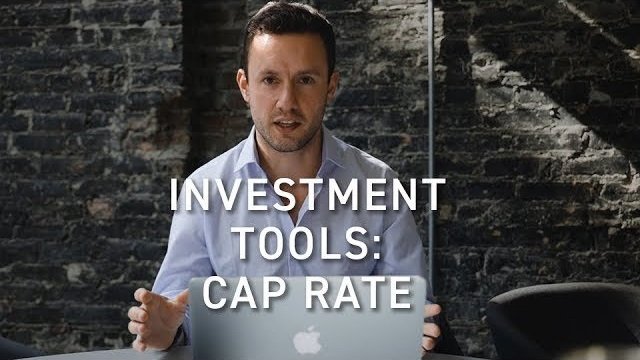With over five years of real estate investment and development experience, Chris Sweitzer has been involved in excess of $1B of transactions, including commercial, industrial and multi-family acquisitions, developments, and dispositions.
Today he will discuss investing using cap rates.
Cap rate is a really useful tool in calculating the valuation of a potential investment property or condo. Let’s run through a quick back of the envelope example.
Let’s assume you purchased a two unit investment property.
Scenario 1
Let’s say unit one can rent at $2,500 a month. And unit two, being on the top floor, let’s say $2,900 a month. Then in order to get your gross annual income, you take the sum, those and multiply by 12. So you have $64,800 in gross annual income.
In order to get to your bottom line or your net operating income, or NOI, you have to figure out what your expenses are going to be. A good rule of thumb is typically to apply 30% of your gross annual income to determine what your annual expenses are gonna be. So about $19,440 in gross annual expenses. And then you can calculate your net operating income. In doing so. You take your gross annual income, less your gross annual expenses to get down to $45,360. This is all before your debt service, but is the way to evaluate what the property is gonna produce from a return standpoint.
So once you have your net operating income, you can apply a cap rate based on your market understanding. Basically what similar properties have traded for. For this example, let’s say it’s a West Loop purchase, where similar properties are trading around 7% cap rate. So what you do is you take your net operating income, divide that by 7% to get your property value. So based on those two units, their income, less expenses and applying a 7% cap rate, it would lead me to believe that the property should be valued around $648,000.
Scenario 2
On another hand, we can evaluate this the opposite way. Let’s say if a property is listed for sale, we can determine what the cap rate is based on the listing. Let’s say this property listing price is 800,000. Based on those initial assumptions that we had $2,500 a month and $2,900 a month, getting down to your net operating income of $45,360, you can determine what the cap rate of this offering is.
In order to do so you have to take your net operating income, divide that by the listing price. And that gives you a percentage. That percent is the cap rate. It comes out to 5.67.
Conventional wisdom is that if you’re investing your money in the stock market or your 401k, you should expect to receive between 7% and 10%. So that would lead me to believe that the owner may be a bit unrealistic in the listing price of 800,000 and potentially advise a client to take a look at it from scenario number one, where it shows that based on comparables and what we think we can produce from a net operating income standpoint. According to these figures the property is likely valued at around 650K, 600K.
This broad and basic tool for Cap rates gives all investors a better understanding of property value and what they might be. It will help you function in the real estate world.If you are ready to buy a home, or want to learn more about the pros and cons of HOA’s for buying an investment condo from the best local Chicago , please check out the rest of our blog for valuable content.


